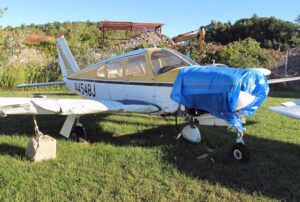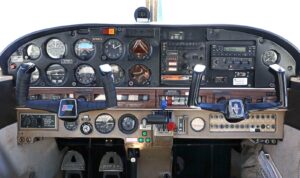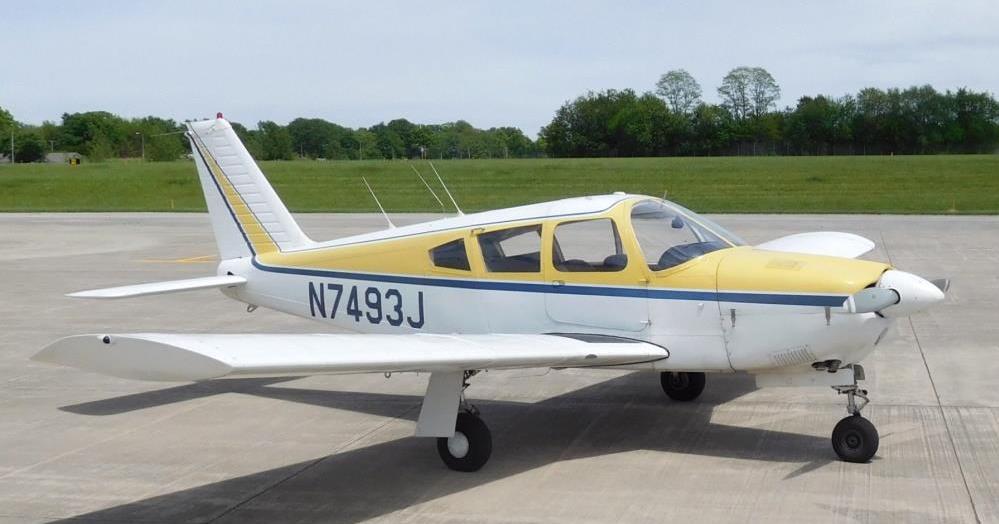1968-82
When Dad sold his Bonanza, I was compelled to face the classic dilemma of a young married aviator wannabe. Flying takes a concurrent supply of time and money – and I was limited on both fronts. These years were filled with life and upheaval – children, marriage issues, job changes, and six moves. With one notable exception, flying shifted to a back burner.
Cliff Notes of the Non-Flying Years
- First Family:
- 1967 – Lynn’s and my daughter Susan was born.
- 1968 – Lynn and I moved to a larger home to accommodate our growing family.
- 1969 – We moved to Blue Bell, Pennsylvania for my new job.
- 1971 – We moved back to Arlington Heights, Illinois.
- 1977 – My marriage to Lynn was crumbling.
- 1978 – Lynn and I divorced and I moved to an apartment.
- Second Family:
- 1978 – Some months after being divorced, my co-worker Marie and I discovered that our friendship and professional relationship had blossomed into much more. (More on that in future posts.)
- 1980 – Marie and I were married. I moved in with her and her two children (Lainie and Eddie), we moved to a new home, and our son Jeff was born.
- Career:
- 1964 – Upon graduation I began working at Clapper Publishing Company (my parents’ business) where we installed a new computer for which I was the sole programmer.
- 1967 – We installed another new computer – more intense programming.
- 1969 – I left Clapper for a job with Univac in Blue Bell, Pennsylvania.
- 1971 – I returned to Clapper in anticipation of my parents’ retirement.
- 1974 – Mom and Dad retired and I found myself busier than I had ever imagined.
- 1975 – Within six months, our business faced a financial crisis and I was up to my ass in alligators.
- 1976 – Reshaping the company, I quickly returned us to profitability.
- 1976 – I bought Crafts ‘n Things magazine from its bankrupt founder in Texas. In one fell swoop our business doubled.
- 1978 – In the belief that my ship had landed, I bought into an airplane partnership. (See The One Exception below.)
- 1980 – Crafts ‘n Things turned out to be a basket of trouble. I two years I was broke – I had mountains of debt and was losing money at a prodigious rate.
The One Exception:
She was a beauty. My first airplane. Well, not mine alone. Todd Parkhurst, a lifelong friend, was part owner of N4548J, a 1968 Piper Arrow. He asked if I wanted to buy out his partner … so after a ten-year hiatus, I would be flying again. Woohoo!

Partnership in a plane can be dicey. But Todd and I had grown up together – we knew and trusted each other. He would manage the maintenance, I would keep the records. We’d split the fixed costs (tie-down and insurance) and prorate the variable costs based on actual usage.
Every other month one of us would be captain. The captain had unlimited use of the plane. The other partner was free to fly it simply by asking permission of the captain. Conflicts almost never arose – Todd flew mostly on the weekends and I liked weekdays.
Though it’s rarely true, for some reason, flying seems to cost less when you don’t have to pay a rental bill at the end of each flight. Just like when Dad had the Bonanza, cost never deterred me … I would use any excuse to get in the plane and fly. I was having a ball.
One wall of my office was covered with an aerial chart of the entire US. I put a nail at Palwaukee Airport, attached a string, then drew a line from the nail with miles marked every fifty miles. In a minute I could estimate the flight time to anywhere in the country. Often I would do it while I was talking with someone on the phone and bragging how easily I could fly out to see them.
Whenever I took a trip, I’d draw the flight path and note the date of the flight. The chart became a giant visual of my flying.
To really be able to plan a trip with the confidence that I could return as planned, required an instrument rating. As an instrument pilot, I could safely complete a flight from a couple minutes after take-off to a minute before landing without ever seeing anything other than instruments and radios – including alternatives if the weather changed or instruments failed.

Learning to fly without the ability to see outside the plane takes about the same amount of time and study as learning to fly in the first place. And just like when I first learned to fly, I often felt overwhelmed by the amount of information required and the skills to be mastered.
After six months of study and training, my instructor suggested it was time for a practice check ride – a ride with another instructor for a lot less money and without the stigma of a failed ride with an examiner.
I flunked.
I came back to my office, tore down the chart and stopped flying.
